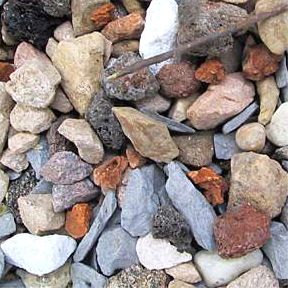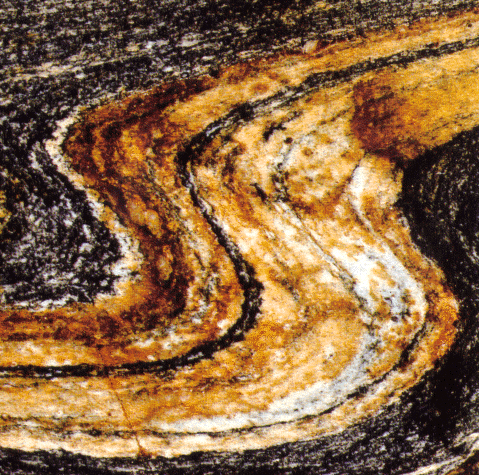 |
ROCKS |  |

 |
ROCKS |  |

 Metamorphic rocks form from the transformation of igneous, sedimentary or other metamorphic rocks. Metamorphism occurs when the parent rock is subjected to high heat, high pressures and chemically active fluids.
Metamorphic rocks form from the transformation of igneous, sedimentary or other metamorphic rocks. Metamorphism occurs when the parent rock is subjected to high heat, high pressures and chemically active fluids.
Heat provides energy to drive chemical reactions resulting in mineral recrystallization to form new minerals. Some of this heat comes from contact metamorphism where nearby magma "bakes" the rock. A second source of heat comes as the rock increases in depth.
Pressure also increases with depth producing more compact rock with greater densities. Two types of pressure develop, confining pressure and differential stress. Confining pressure is uniform pressure from all directions. Differential stress generates mountains by acting in one plane.
Chemically active fluids are composed of water, carbon dioxide, and other volatile substances. The fluids surround mineral grains and promote recrystallization by enhancing ion migration.
Metamorphism occurs incrementally, low-grade to high-grade. High-grade metamorphism destroys bedding planes and fossils. There are two types of metamorphism, contact or thermal metamorphism and regional metamorphism. Contact or thermal metamorphism is driven by a rise in temperature of the parent rock. Regional metamorphism occurs when large amounts of rock are subjected to direct pressure and high temperature to form mountains.
The texture and mineralogy indicates the degree of metamorphism.
Foliated texture results when the minerals align to give the rock a layered or bonded appearance.
Nonfoliated texture results when metamorphic rocks do not have bands and may be composed of one type of mineral.
Back to Rocks Page 3 |
Rocks Page 5 |
Go To Rocks Assignments |